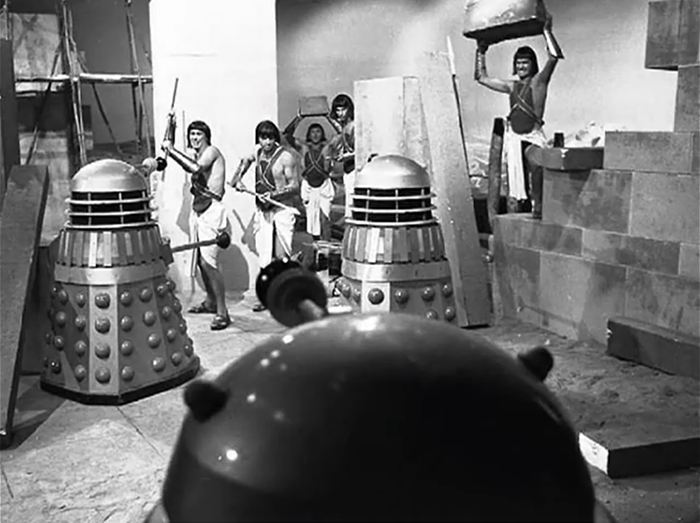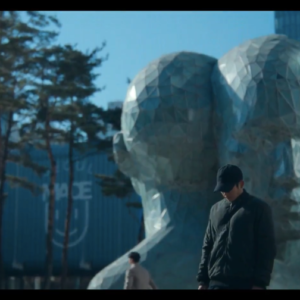The Doctor: First Doctor (William Hartnell)
The Companions: Susan (Carole Ann Ford), Barbara (Jacqueline Hill), Ian (William Russell)
The plot: The Doctor and his companions finally make it back to Earth in the right time only to discover they’ve been shrunk to the size of insects
Written By: Louis Marks
First aired: 31/10/1964-14/11/1964
Continuity: The Doctor and Susan mention zeppelins and air raids, implying they had been in London during the Second World War.

Season 2, episodes 1-3 review
This is why I sojourn here,
Keats, La Belle Dame sans Merci
Alone and palely loitering,
Though the sedge is withered from the lake,
And no birds sing.
In 1962, Rachel Carson published her seminal work, Silent Spring. One of the most powerful and influential environment texts of the modern era, it documented the devastating and potentially long-lasting impact of pesticides such as Dichlorodiphenyltrichloroethane (DDT).
The book’s impact on environmentalism cannot be overstated and in 1964 it inspired Marks to write this short three-parter about the dangers of pesticides and of the companies that produce them. It took until 1972 for DDT to be banned in the US and almost another 15 years for it to be banned in the UK (1986).

Marks used an already-common sci-fantasy trope of shrinking his protagonists to demonstrate the risk of these kinds of pesticides. As the Doctor and his companions encounter dead insects, worms and other wildlife, they also face their own vulnerability. Marks has cleverly shown us the devastation of a pesticide like DDT while also humanising the deaths of the creatures felled by it. These creatures are living beings like us. Just smaller.
The former admittedly leads to some lovely set work with giant match books, briefcases and sinks looking remarkably real as our characters climb into or out of them. In an era before CGI or even sophisticated green screen effects, sets had to be painstakingly constructed. And in the case of Planet of Giants, it’s some truly exceptional work (apart from one scene where they project an image to simulate the TARDIS crew looking up at the giant head of a murder victim – it just looks instead as if they’re at the cinema).

It’s a clever conceit certainly and Marks makes his point quite effectively. Unfortunately, a clever and well-conceived premise is only 1/10 of a piece of television. Once shrunk, he simply doesn’t have that much for our characters to do other than wander around marvelling at how small they are in relation to normal household objects and being frustrated by how much more effort everything now takes.
Like a lot of early Who, Planet of Giants would have benefited from being an episode shorter; saving us from long scenes of our characters walking, puffing, panting or climbing. The storyline was planned to be even longer, which no doubt explains why it drags out over two episodes before suddenly resolving. But, pacing aside, the episode achieves powerfully what it set out to do. You can’t ignore the devastation when it’s on your level. And the writer’s clear message is stark: human beings are at risk from our own environmental vandalism as much as the other life with which we share the planet.
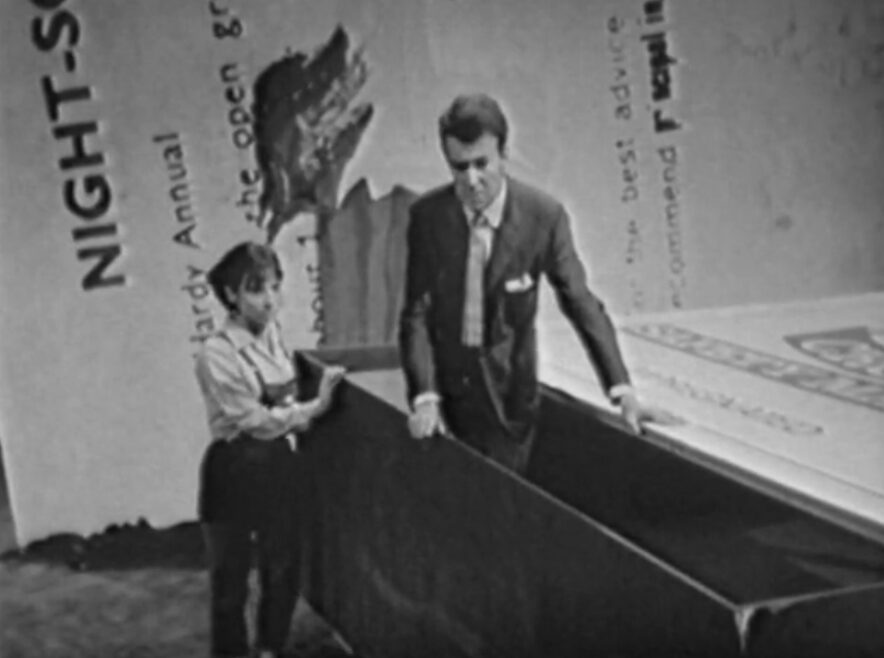
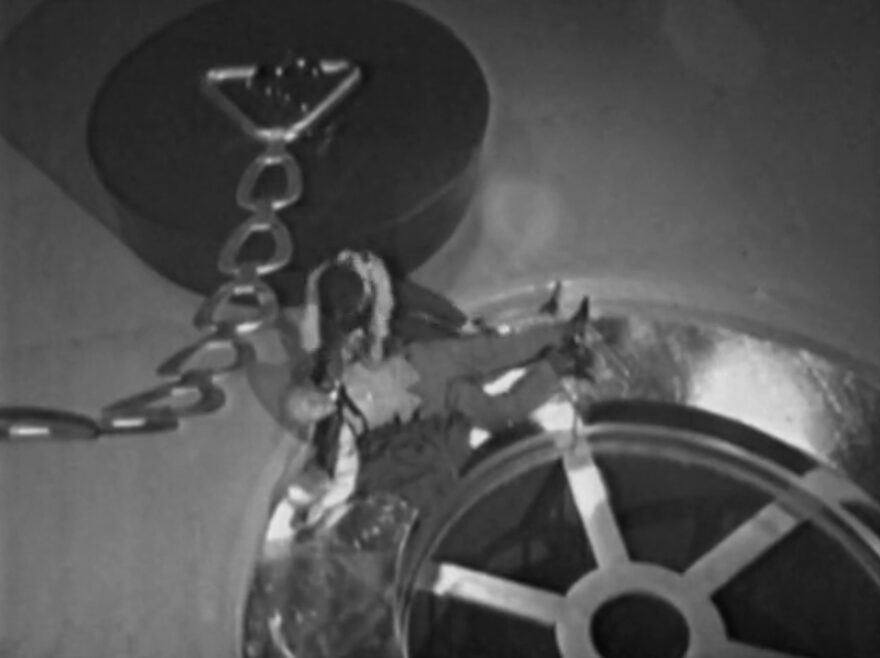
The episode begins as the Doctor attempts again to return Ian and Barbara to their own time in the mid-20th century. He succeeds. But a fault while landing causes the TARDIS and its crew to be miniaturised.
Not realising what’s happened – there’s a rather dated scene where the ship’s cathode-ray monitor blows out when it tries to show them an image of their surroundings – they at first assume they’ve landed somewhere alien and new. A planet of giants, if you will, as the local wildlife looms terrifyingly above them. But thankfully (if mysteriously) dead.
As they wander through what turns out to be a front garden of a residential home, the Doctor begins to see an intelligence behind the path they’re on. But it’s only when they find a giant seed pocket of an ornamental plant with English lettering on it, do they realise they’re on Earth but seeing it from a completely different perspective. They are, in fact, only an inch tall (2.54 centimetres).
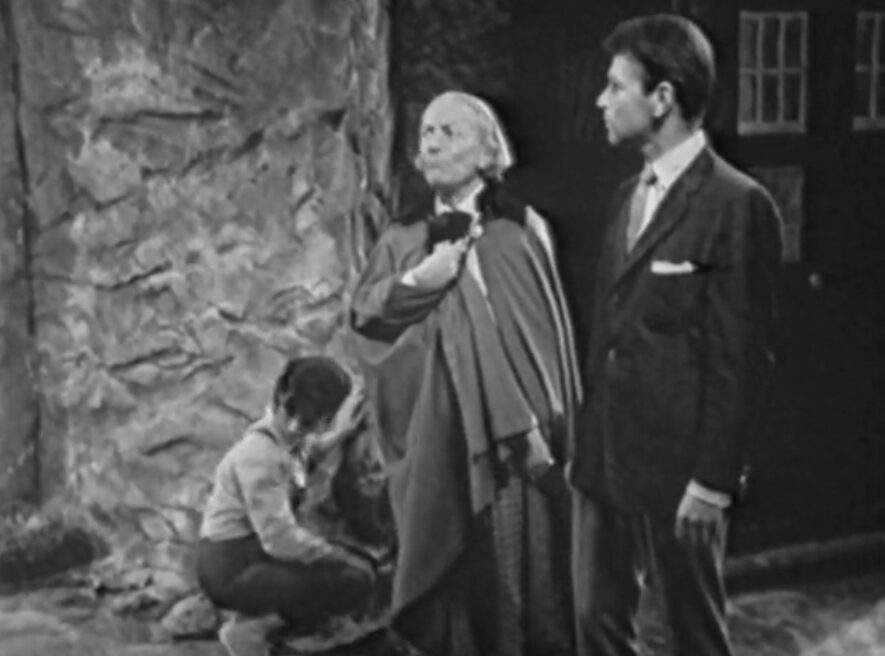
In the garden waiting to speak to wealthy industrialist, Forester, is government scientist, Farrow. He’s there to break the bad news that he’s not approving the use of Forester’s new pesticide, DN6, and wants to bring in other scientists to review the research again. He’s concerned about the pesticide’s wide-ranging environmental impact – an impact that Susan later describes as ‘indiscriminate’. It’s an argument that a man like Forester finds inexplicable (killing insects, after all, is what the pesticide is literally for).
There are many insects which make a vital contribution to agriculture, and these insects must not die. Did you know that?
Farrow, Planet of Giants
Forester has put all his capital into arranging for large-scale production of the pesticide and he’s not ready to lose his investment over something as inconvenient as scientific fact. Looking down the barrel of losing a fortune, Forester turns that barrel on Farrow instead.
One of the most interesting aspects of Planet of Giants is that there is an entire plotline happening around our main characters that they are unaware of: Farrow’s body lying in the garden; the giant booming sound of the gun; the indecipherable bass sounds of human speech that their tiny eardrums can no longer translate. They materialise in the middle of a homicide but have no knowledge of who is dead or why. To them he is just another of the many corpses they have stumbled across since leaving the TARDIS.
There’s nothing but death all around us
Barbara, Planet of Giants
Inured to death is Forester’s researcher, Smithers, who arrives to find his boss and a dead body but is blithe in his unconcern. He knows that there is something untoward about the death but feels this is irrelevant when compared to the world hunger he is keen to overcome. If Farrow stood in the way of saving the lives of the starving then his death was worth the sacrifice.
And so Marks has given us our three sides of the argument: the scientist, the capitalist and the ideologue. Solving world hunger and ensuring sufficient food supply was (and remains) the defining motivation for developing substances such as DDT in the first place. But once that motivation becomes a crusade then it can trample over the lives of the very people it’s supposed to be helping.

Smithers and Forester need to find a way to make it seem as though Farrow is still alive so he can give his approval of the DN6. They shuffle off to the lab unwittingly taking Barbara and Ian with them in a briefcase. The basis of their separation from the others and journey into the house is clunky and somewhat contrived but it achieves its goal. Everyone is separated and further from the TARDIS than ever.
As the Doctor and Susan clamber up a drain pipe to try to get into the lab, Barbara and Ian look around the table their briefcase has been put on. They find a large bowl of what Ian speculates must be wheat. Barbara picks up one of the grains and notices it’s sticky. She’s just been exposed to a toxin that, at her size, is bound to be lethal.
It’s a fact that Barbara keeps to herself as she and Ian try to find a way to undertake the marathon task of even getting off the lab table, let alone out of the lab. When the Doctor and Susan emerge in the lab’s sink, they realise they have a faster way out through the downpipe if the two of them can make it across.
And all the while, Barbara is grappling silently with the fact that she is dying.
While initially determined to escape, the Doctor and his companions find the formula for DN6 and realise just how dangerous it is. A deadly and persistent pesticide that doesn’t break down in the environment or across the food chain. DN6 is an environmental disaster waiting to happen, one that will eventually kill as many humans as it will feed. And if we haven’t gotten the message yet, Barbara herself is slowly succumbing to it.
Our little gang decide that they can’t wait until they’re the right size but have to stop the production of DN6 now before it’s too late. They manage to do this with the help of a truly extinct species – a telephone operator.
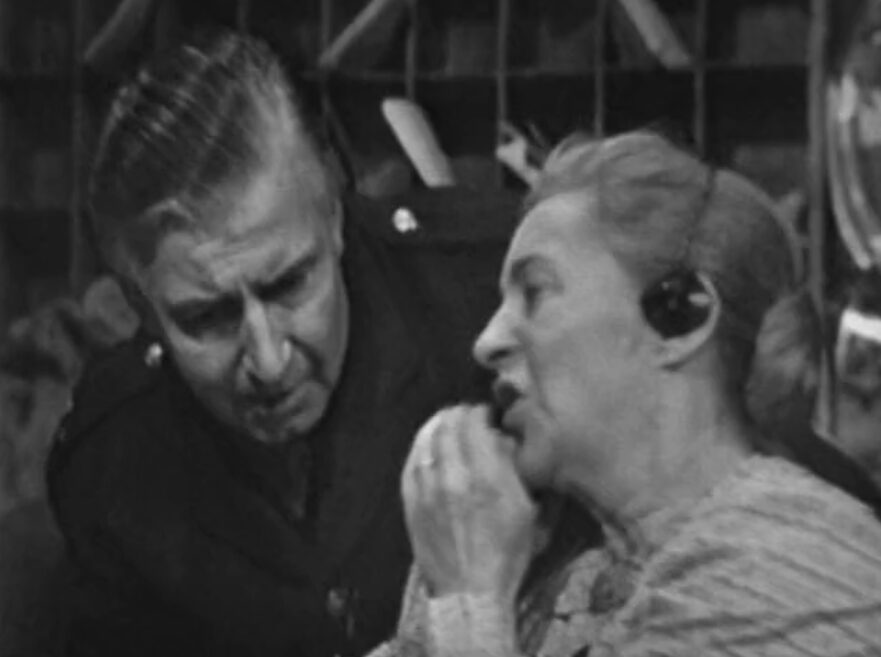
It’s an interesting decision that speaks to the Doctor’s character development. Only a few months before this, he would have argued that it was not their place to get involved. Now the entire crew is united in their need to destroy the new pesticide – even they have to do it while they’re one inch tall. As well as alerting the authorities, they manage to destroy the sample. DN6 goes up in smoke.
With the danger to Earth’s ecosystem (at least this one) averted, the Doctor and his companions head back to the TARDIS to try to regain their proper size and save Barbara’s life. They succeed and Barbara feels better almost immediately. And as the TARDIS crew head off to scrub any hint of pesticide off themselves, the Doctor and his ship materialise… somewhere….

